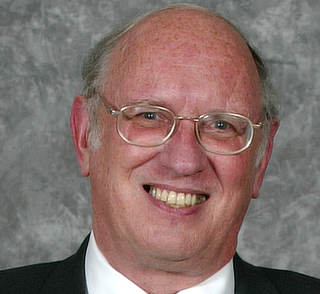
Selwyn Blaylock Canadian Mining Excellence Award
2004John T. Postle Award for MRMR and Mining Studies Excellence
(Biography from 1995) James M. (Jim) Franklin is an exploration geologist with over 40 years of experience in the study of mineral deposits and regional metallogeny. He is a graduate of Carleton University (B.Sc., M.Sc) and the University of Western Ontario (PhD). After teaching at Lakehead University (1969–1975) and consulting for Noranda Inc. during that period, he joined the Geological Survey of Canada (GSC), where he directed major research programs on volcanogenic massive sulfide and gold deposits in the Churchill and Superior provinces from 1975 to1993. From 1983 until 1993, Franklin also coordinated the GSC’s marine minerals program, an integrated research program that culminated in the discovery of a major deposit at Middle Valley on Canada’s Juan de Fuca Ridge, and two legs of ODP drilling there. As chief geoscientist of the GSC from 1993 to 1997, he was responsible for coordinating GSC’s entire scientific program. Currently, he is a director or science advisor of three exploration companies and sits on numerous boards for professional and scientific groups. His consulting work is focused on new discoveries of volcanogenic massive sulfide deposits, orogenic and porphyry-style gold in Precambrian terrains, magmatic chrome and nickel-copper sulfides, and various types of uranium deposits.
Distinguished Lecturer 2012-13
Future Mineral Resource Discoveries: New Knowledge Needed for Discovery
Lecture Abstract
Future discoveries require innovative exploration. As we establish satisfactory, quantitatively qualifiable criteria for all deposit types, we can assess ore potential using modern-quality digital geological maps, at least at a broad scale. Three-dimensional rendering techniques used for deep imaging of the earth are now adapted to explore shallow crystalline terrains. Advanced ultra-sensitive geochemical methods, using gases, organic compounds, soil, plants and rocks are providing much improved vectors to ore. New field-based analytical methods enable mapping of all but the lightest elements, as well as a wide spectrum of clay minerals.
Developing quantitative models of ore-forming processes that can be applied at all scales will ensure the supply of metals needed for the rapidly developing nations, and for improved quality of life everywhere. New mining and extractive technologies must also be developed in Canada if we are to remain at the forefront of efficiency improvements in discovery and processing. The Canada Mining Innovation Council’s efforts to raise Canadian R&D capacity through new public-private partnerships, possibly developing a specific innovation fund, need our support.
 - dev.png)

